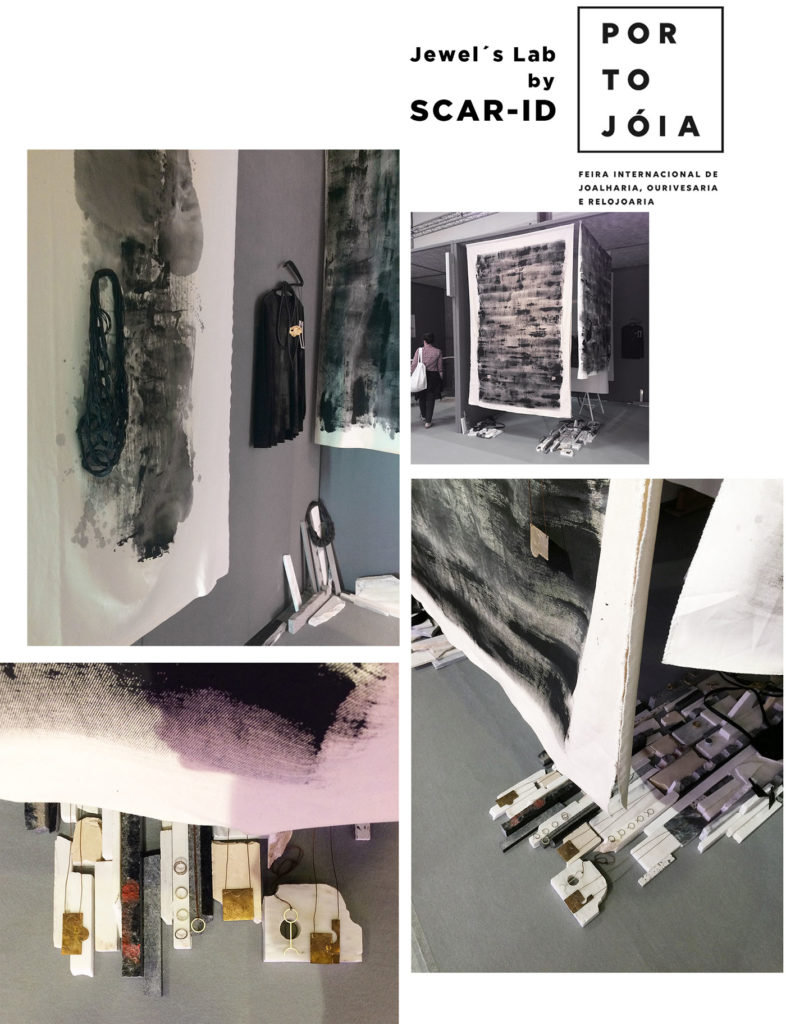
We were commissioned to design an ephemeral exhibition space to be set during PortoJoia 2019 fair in Porto, Portugal. Jewels´Lab is a segment of the well-known Portuguese jewellery fair, that was conceived to explore new concepts for showcasing and communicating jewellery.
We were asked to propose a space that, by its distinctiveness, could be able to influence, stimulate and serve as reference to impulse changes in the traditional jewellery sector in Portugal, that generically doesn’t invest much on product display, leading to a significant stagnation regarding commercial design.
We thought it would be interesting to stretch the initial briefing purpose to its limits, understanding the proposal as an experimentation laboratory for exhibition space and product display.
The organization invited us due to our experience running SCAR-ID*, that we founded 6 years ago as a Porto based concept store working in the communication and trading of Portuguese brands and independent creatives, and now extends itself as a studio with a wide range of services, as a result of our base training in architecture and fine arts.
What we usually do at SCAR-ID, for product display and brand communication, is to set in confrontation the several design fields we work with. We founded our idiosyncrasy in some sort of an aesthetical coherence in the graphic, textural and programmatic conflict between the various disciplines.
For the Jewel´s Lab project, with an existing base 3m x 3m box structure, we explored a spatial drive through marble and black painted fabric. We choose to use two different, almost opposite materials: the rigidness of the store, contrasting (once again the idea of the contrast) the smoothness and sinuosity of the fabric.
Working on this intervention more like an architectural installation rather than a simple fair stand, we designed a façade and an entrance to an indoor parcour. It was important for us to draw a walking path through the space, creating inside-out perspectives and viewpoints, but at the same time, we wanted to do it replacing the traditional architectural elements by object-type elements.
On the façade, like a provocative statement, a large black painted canvas-fabric with jewellery suspended in it was the first element designed to drawn the visitors´ attention by its opposition to the minimal and sensitive design of the overall stands.
This canvas-fabric was actually understood by us as a wall panel, and was used in the interior to define three different spaces: first, a corridor with suspended jewellery, facing a clothing piece; a transition space with a large marble table top filled up with 67 small ceramic hand-jewellery pieces; and finally a square space highlighting a mosaic designed with several marble leftovers pieces with different colours and textures to showcase brass, bronze and leather jewellery.
The overall ambience resulted in a dark, shady, dull, intriguing space where the jewellery was emphasized in a differential atmosphere. The idea was to create some kind of visual stimulation caused by the oddness of the proposition and get the public drawn to the inside of the architectural installation to get in touch, physically, with the textures of both constructive elements and, of course, the jewellery.
In addition, we summit other areas of design we normally work with, such as fashion, accessories and ceramics, challenging a dispute with the jewellery. Even the choice of the jewellery was unusual: plastic, rubber, leather, brass, bronze and ceramic.
The space was dismantled in our hour, after the four days of the fair. The marble pieces will be used in further exhibit spaces, the painted fabric will be transformed into clothing, the objects will be sold in store, but the mission of the intervention will continue its path influencing the agents of the jewellery sector.
